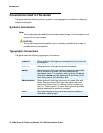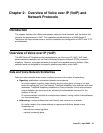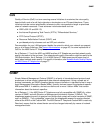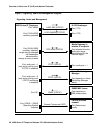
Issue 2.2 April 2005 21
Chapter 2: Overview of Voice over IP (VoIP) and
Network Protocols
Introduction
This chapter describes the differences between data and voice networks, and the factors that
influence the performance of VoIP. The installation and administration of 4600 Series IP
Telephones on Avaya media servers, and the installation and configuration of DHCP and TFTP
are addressed.
Overview of Voice over IP (VoIP)
The 4600 Series IP Telephones allow enterprises to use Voice over IP (VoIP). VoIP uses
packet-switched networks over the Public Switched Telephone Network (PSTN) instead of
telephony. However, using data networks to transmit voice packets poses a problem. Data
networks were not designed for the specific qualities required by voice traffic.
Data and Voice Network Similarities
Data and voice networks share similar functions because of the nature of networking.
● Signaling: establishes a connection between two endpoints.
In a voice network, signaling helps identify who the calling party is trying to call and
where the called party is on the network. Traditional telephony uses terminals with fixed
addresses. Traditional telephony establishes a fixed connection for the communication
session between two such terminals, allocating fixed bandwidth resources for the
duration of the call.
IP communications constitute a connectionless network, having neither fixed addresses
nor fixed connections.
● Addressing: a unique address that must identify each terminal on a network.
In a voice network, the unique address is a permanent attribute, based on any
combination of:
- international numbering plans,
- national numbering plans,


















